Dear Friends of the Fairywren Project,
Updates are here! Since we talked last we've presented at a couple conferences and we've completed another transect! First, conferences:
Part 1: In June we were fortunate to attend one of the largest bird conferences in the world, the annual meeting of the American Ornithological Society in Anchorage, Alaska. Despite being named the "American" Ornithological Society, researchers come from all over the world to present their findings and ideas, including a few researchers from Australia! The diversity of birds presented on at this conference is astounding. We learned about everything from how bird migration can be tracked via weather radar, to the tricky evolutionary relationships among Australian Woodswallows.
But most exciting to us, was the opportunity to present a poster on our ideas for the Fairywren Project. Conference presentations usually come in two forms - you can give a 12 minute talk and then answer questions for 3 minutes, or you can present a poster and strike up conversations with people who wander past and want to learn more about your research in the two hours that poster sessions usually run. Posters are great for new ideas and preliminary data because they give you time to interact with your audience and allow time for informative discussions that can end up shaping the direction of your research.
Australia's fairywrens are nearly as popular in the American birding crowd as they are among Australian birders, so we were approached by many an inquiring researcher looking to learn more about cooperative breeding and fancy plumage in fairywrens. We did not have time before the conference to analyze any of the data you've submitted yet, but come next year we will be sure to present on your findings! So keep in mind, that even though while you're birding it might not seem like you're doing too much by reporting plumage types and group sizes, next year the data you are submitting now will be seen by ornithologists from across the world!
Check out our poster below and let us know if you have any questions! Many of the ideas presented in the poster you've probably seen before if you've been following us for awhile, but some may be new. You should be able to click on the poster to make it bigger, if your email program supports it. If not, email us at fairywrenproject@gmail.com and we can send you a larger version.
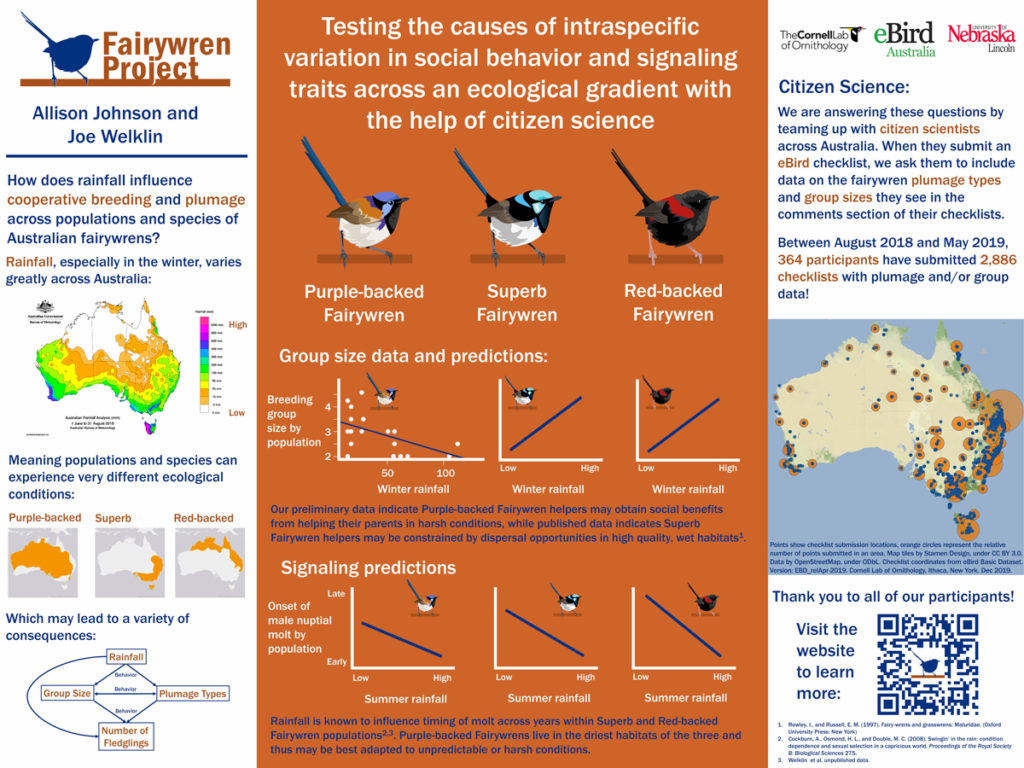
Part 2: We did another transect! Allison is back in South Australia for another field season with Purple-backed and Splendid Fairywrens, but right before her season started, we spent a week repeating the same transect path we did last December. Like last time, we started in wet Victoria and drove up to dry Broken Hill. This time by starting right before most fairywrens began breeding we were hoping to capture variation in timing of moult into bright plumage across different environments. And we did! We saw Superb, Purple-backed, White-winged, and Splendid Fairywrens, just under 400 individual birds in total. In groups with multiple males, it was not uncommon for the dominant male to be fully in nuptial plumage or close to it, but the subordinates were often behind the dominant in moulting in their nuptial plumage. Below are some of our favorite photos from the transect. We'll look at these data and get you some preliminary findings in the near future!
As always, thank you for your continued interest in the Fairywren Project. August marked a full year from when we first launched the project. In only a few days eBird will update their database and we will be able to see how many submissions we have in our first year. Exciting! So many questions to ask and we're so excited to start playing with these data.

One of the funniest moult patterns we've seen on a male Purple-backed Fairywren. He looks like a superhero with the blue on either side of his face and brown on the top of his head!

The grumpiest male Superb Fairywren in moult.

A male Superb Fairywren in very early moult! Look closely at his cheek and you'll see a blue feather coming in. This was a fun find, notice how the bird has both brown female-like lores around his eyes and a male-like dark bill. Juvenile males have lores when they hatch, then moult out of them into bright plumage before their first breeding season as an adult.
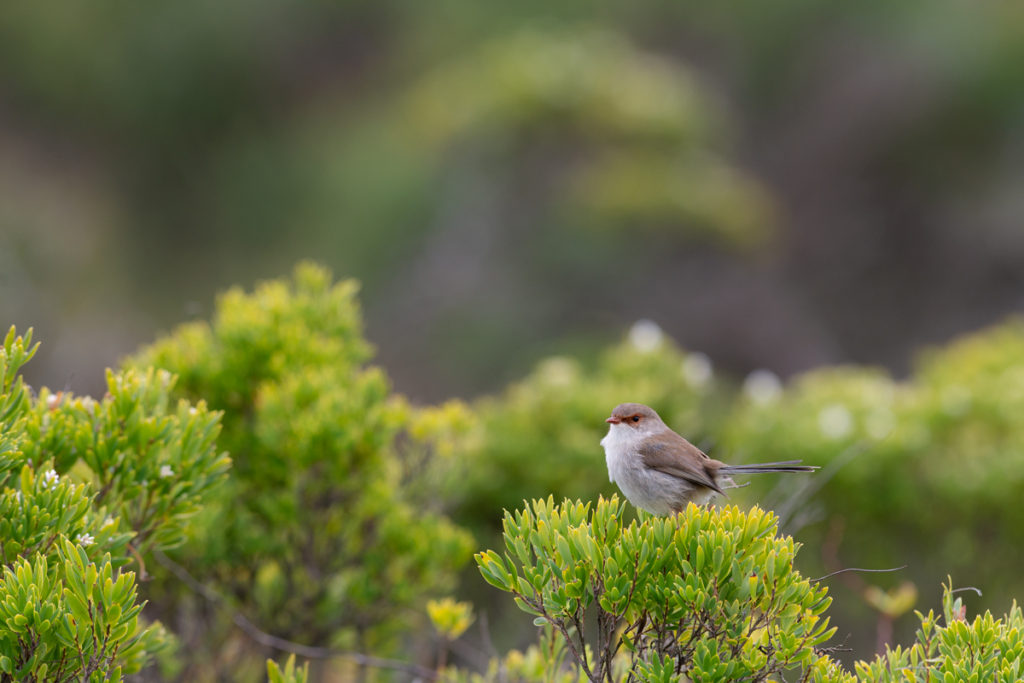
Here's a female Superb Fairywren for reference. Notice the brown bill.
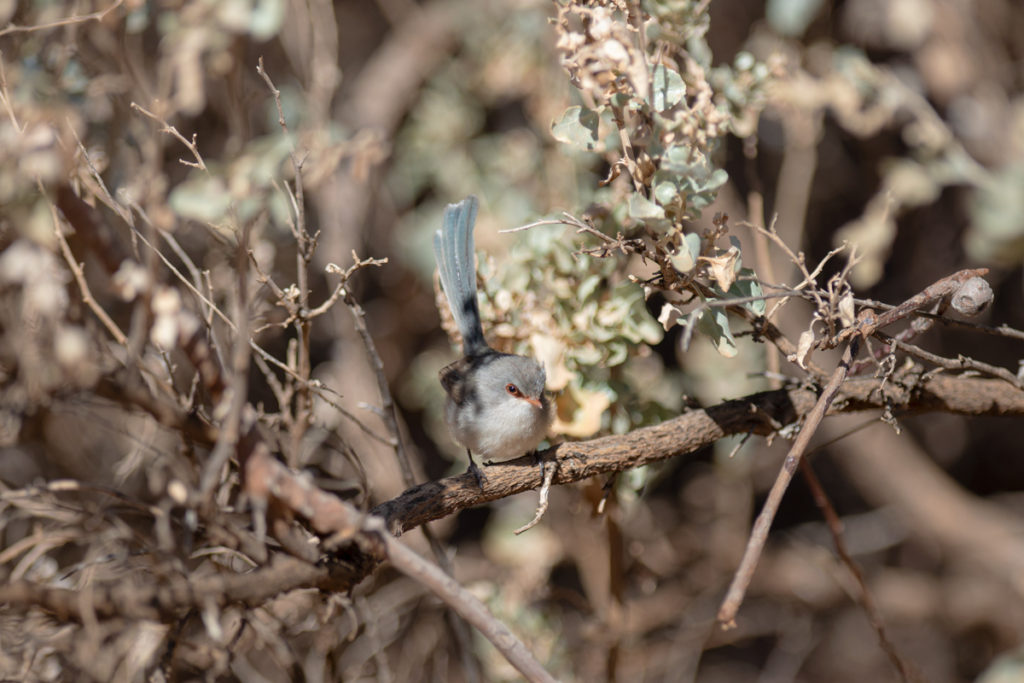
Female Purple-backed Fairywren.
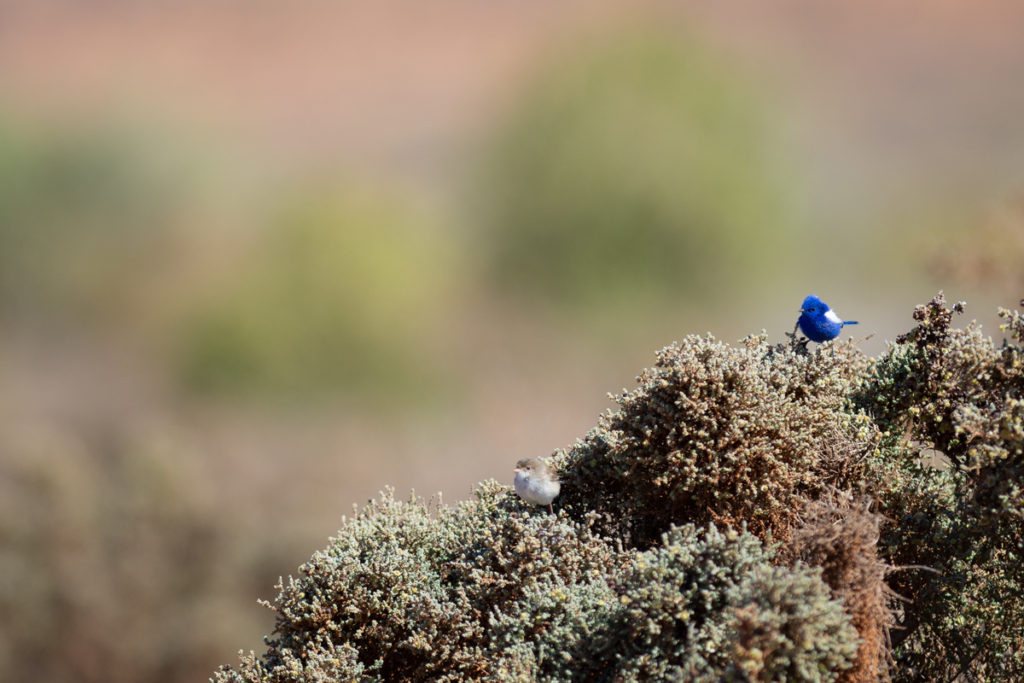
The elusive White-winged Fairywrens. Female and male pair.
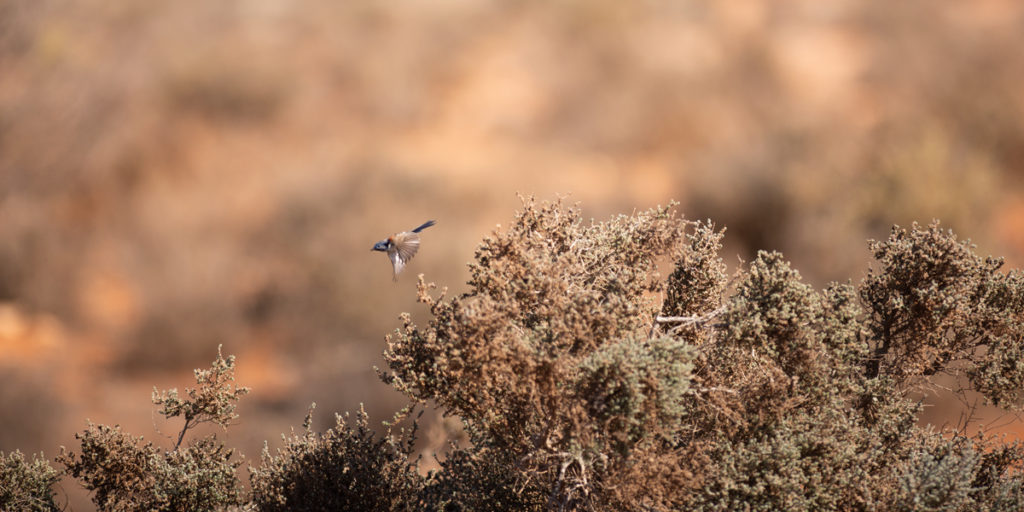
Finally, despite all the close up photographs, this is what we normally see when we're out birding. "Wait! Come back!"
Happy Birding!
Joe and Allison
